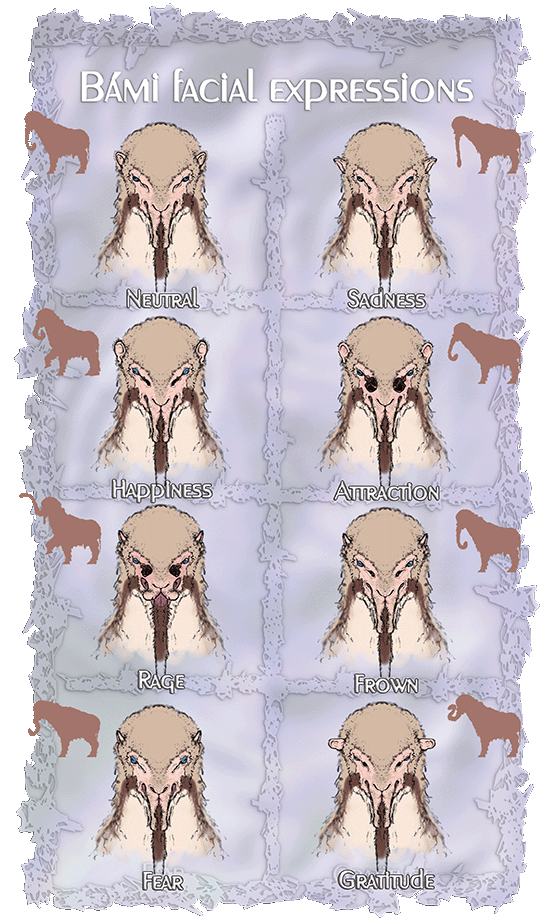Bám ---
Description
The Báms are three to four metre tall sophonts, previously native to the northernmost regions of the Earth. They have spread into various regions of the planet, although colder environments tend to be preferred, even though their dense wool, which can be groomed and trimmed into many forms, makes them very adaptable to climate. They walk on four legs ending in hooves, but their most notable feature is their long, muscular tongue. It is used for item manipulation and assists in feeding by pulling down the branches that the herbivorous Báms chew on. In prehistory, they were nomads who periodically returned to the same location. Their herds could consist of hundreds of members, and they were, and still are, able to perfectly remember the face of each and every one of them. These ungulates are very socially and emotionally intelligent but tend to be slower when executing more logic-based tasks. Although it's worth mentioning that intelligence across different cultures, let alone completely different species, is extremely difficult to measure. Even though the Báms are able to communicate well with other sophonts, there is still some mystery surrounding the behaviour and thought processes of both sides.
Their hooves are similar to those of sheep, except wider and heavier, and the two digits kept off the ground are covered in fatty areas and oily cavities for sensing vibrations (which evolved from scent glands). Stomping and feeling vibrations from fellow Báms is crucial to their communication. The Báms are so sensitive to this information that they are able to tell individuals apart just by feeling their walking vibrations.
The Báms exhibit a great degree of neural plasticity – their cognitive abilities improve significantly for the rest of their lives if their diet consists of at least 30% meat or other animal protein during their growth years.
Evolution
They descended from a feral sheep population that had to adapt once there were no longer any humans to trim their wool. Some of these sheep started licking and biting it off one another, which was not only more effective than scratching it off (having to stop and risking getting stuck), but also strengthened the relationships between the herd members. Their tongues grew longer and more muscular, eventually becoming useful for item manipulation as well.
The DNA-altering nanites are unpredictable. Some of them mutated the brains of the offspring of the Bám's ancestors, which caused them to become more perceptive. Natural and sexual selection worked in favour of these individuals because they were slightly better at finding resources in the harsh climate and were also more socially intelligent, as well as being able to give their loved ones a better tongue-trim.
Ontogeny
Precocial
Body Language
These are few examples of the facial expressions of the Báms. Their meanings can vary from culture to culture.
